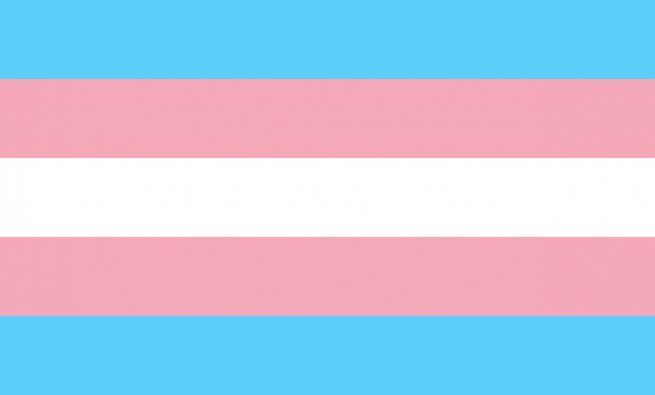What You Need to Know About the Meaning of the Trans Pride Flag
"Hearst Magazines and Yahoo may earn commission or revenue on some items through these links."
Pride Month is here, and while the LGBTQ+ community should be recognized and uplifted every day of the year, these 30 days of June are dedicated to celebrating queer folk and honoring LGBTQ+ history. At celebrations and parades across the world, one of the dozens of LGBTQ+ flags you’ll spot waving high in the air is the trans pride flag, a powerful symbol of diversity and trans joy that consists of five pink, blue, and white stripes.
Before Pride evolved into the wide-scale festivals and celebrations that they’re well-known for today, full of parades and rainbow-centric makeup looks, it was a movement led by trans folks like Marsha P. Johnson and Sylvia Rivera, who advocated for equal rights and acceptance — a fight that is still going strong more than 50 years later.
In 2022, the American Civil Liberties Union reported that the transgender community continues to face discrimination in schools, healthcare, and employment, while the rise of harmful legislation continues to put their lives at risk. It’s critical to show support for the trans community, fight for increased trans visibility, and celebrate the accomplishments, resilience, and voices of trans people around the world. So as you wave and wear your trans pride flag all Pride Month long — and during Transgender Day of Visibility (March 31), Transgender Awareness Week (November 13 to November 19), and Transgender Day of Remembrance (November 19) — read on to learn about the history of the iconic trans pride flag and what its colors stand for. The first step to being a better ally is knowing the history behind the community you’re supporting.
What is the history of the transgender pride flag?
Navy veteran and transgender woman Monica Helms created the Transgender Pride Flag in 1999. She told the Daily Beast in 2017 that the idea for the trans flag just “came to [her]” one morning as she woke up. It was “not a dream,” she clarified, calling it more of a “divine intervention.”

“When you wake up and you’re still sort of groggy and everything but you’re starting to think and your mind is starting to fill with images—that’s when it came to me,” she said.
Helms brought the flag with her to the 2000 Phoenix Pride parade, where she flew it for the first time. In 2014, the original flag was acquired by the Smithsonian’s National Museum of American History, according to the National Center for Transgender Equality.
How did the trans pride flag gain popularity?
When Helms brought the flag to Phoenix Pride in 2000, many were immediately interested in the design. “This was for me and if nobody had embraced it, it still would have been OK for me. It would have been my flag,” she told the Daily Beast. “But then, people started seeing it and they thought the pattern was great and they liked the reason for the colors and it just took off.”

Helms continued to take the trans flag to various parades and events, and eventually, the design caught on. “The speed with which the flag’s usage spared never fails to surprise me, and every time I see it, or a photo of it, flying above a historic town hall or building I am filled with pride,” she said in her 2019 memoir, More Than Just A Flag.
What do the colors of the transgender pride flag mean?
The colors of the transgender pride flag hold a lot of meaning. “The light blue is the traditional color for baby boys, pink is for girls, and the white in the middle is for those who are transitioning, those who feel they have a neutral gender or no gender, and those who are intersexed,” Helms explained, according to Pride.
She purposefully designed the flag so that regardless of how it’s held, it looks the same. “The pattern is such that no matter which way you fly it, it will always be correct,” Helms explained. “This symbolizes us trying to find correctness in our own lives.”
You Might Also Like
